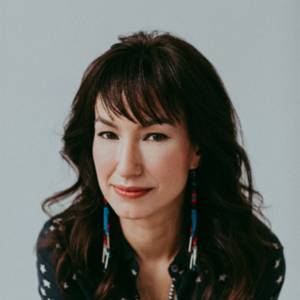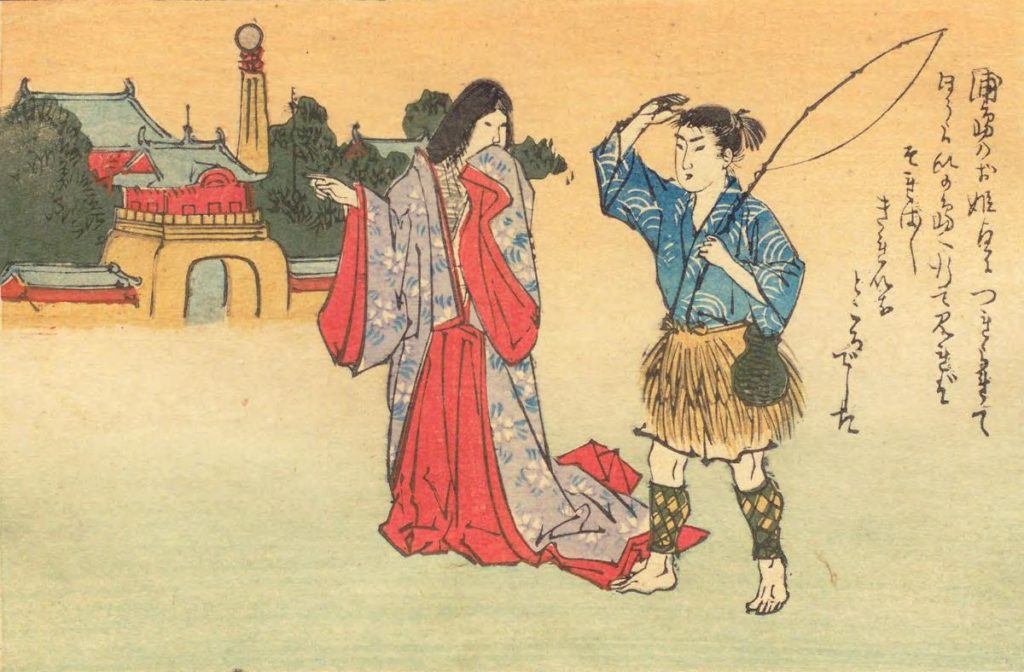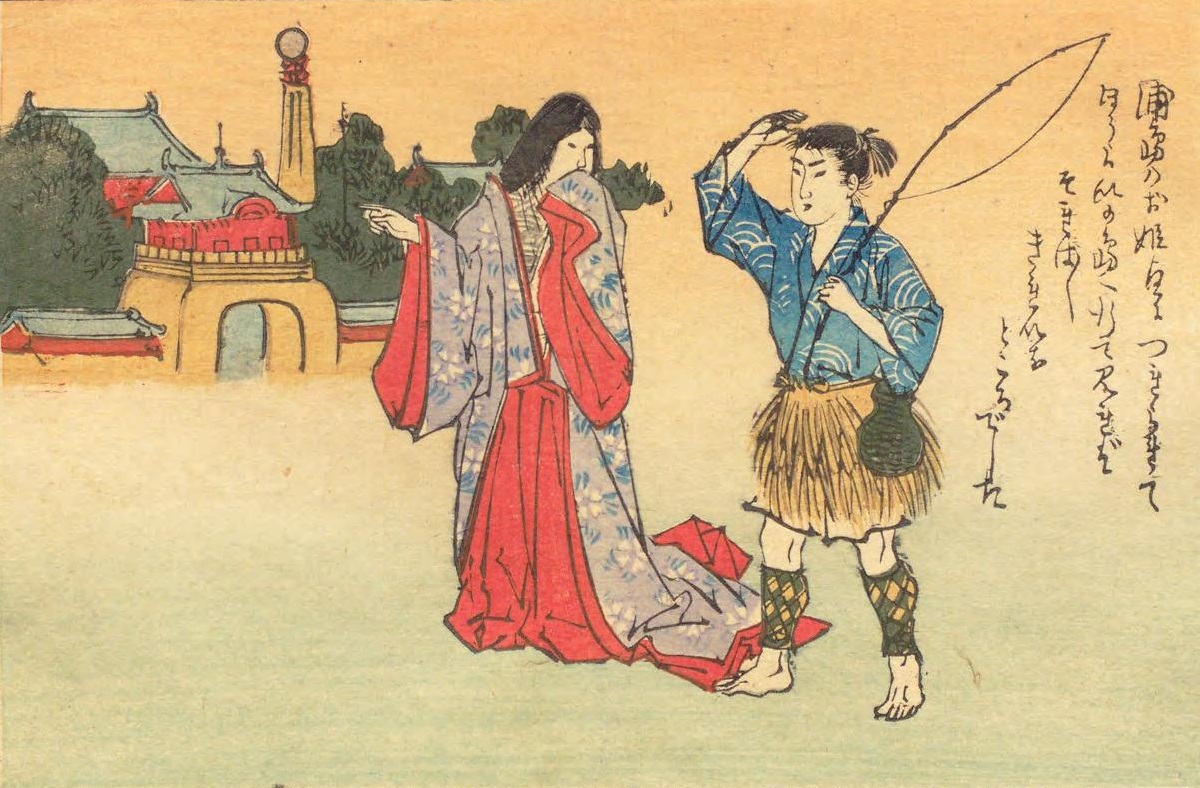Fall 2018
2
Endings, Continued
Marie Mutsuki Mockett, RWW Faculty
Endings, Continued

Marie Mutsuki Mockett
RWW Faculty
I first wrote an essay on the subject of how fairy tales in the East and West end differently for Lithub in 2016; I then spoke further about it on NPR. But I’ve always wanted the chance to discuss these themes directly with students and was happy to have the opportunity to do so this summer at the Rainier Writing Workshop residency.
The ideas I presented aren’t mine alone; Japanese Jungian psychologist Hayao Kawai was the first person to articulate the contrast between story patterns across cultures in his wonderful book, The Japanese Psyche: Major Motifs in the Fairy Tales of Japan. In brief, Kawai points out that Western fairy tales often end with the vanquishing of evil. The hero—because there is always a hero—gets a prize. Sometimes he gets two prizes: a girl and some money. Occasionally a hero or heroine pursues sacred knowledge and retrieves it, like Arthur pulling Excalibur out of a rock or Rey in the new Star Wars series learning about the Force. Patterns like this, Kawai argues, have shaped how we in the West think about our lives and can dictate what we think of as success or failure.
In Japan, the heroine—because the subject is often a girl—eludes the men who try to pursue her for marriage and ends up with some kind of vision of transcendence, usually glimpsed via a natural wonder. Kawai calls this “an aesthetic solution.” In Japan, stories end with mist, with the falling of cherry petals, or with the wind in the pines.
This is a gross simplification of a lecture that took an hour and included a few cameo appearances from Hello Kitty. But among the stories we examined were those of Bluebeard, in which a heroine investigates a locked room to find out the secrets of her husband’s murderous past before she kills him and inherits his house, and Urashima Tarō, in which a simple fisherman visits the princess who lives in the kingdom under the sea and returns home with an enchanted chest that ages him. He finds that all his loved ones in his seaside town have passed away. What kind of a reward is that?

Urashima Tarō and princess of Horai. 1899.
With this lecture, I wanted us to be open to the possibility of what it means to come to “the end,” but of course, my curiosity about the subject of endings didn’t stop with the summer’s discussion. What is a satisfying ending? Since I generally start writing with a relatively complete, if vague, structure in my head, I like to have some kind of ending for my stories, books, and essays in mind before I start. For me, endings are now “the thing for which I’m aiming.” At one point, I probably thought of the ending to a story as being like a reward—the treasure or the reward of love. Now I am not so sure. The most satisfying endings in art are those that continue the journey of the work—elevate it—and have some surprise to them, even as they also feel thematically complete. These days, I find endings that feel scripted to be unsatisfying, but so too do I dislike endings that feel consciously manufactured to surprise. This makes me a demanding reader. I want an ending that “works,” but is not clichéd. It was my hope that our conversation about fairy tales would open up the imagination to the potential of what a story, and thus an ending, could be.
In an MFA program, we are mostly concerned with writing work of literary merit, by which I mean, we are in the business of trying to write books. This kind of written storytelling is a fairly recent development in human culture; for a long time, our stories were told to us orally. The novel is often given the early eighteenth century as a starting date in the West. And while different scholars pinpoint various reasons for the rise of the novel, I’m inclined to indulge the British critic Frank Kermode, who wrote in his book The Sense of an Ending, “. . . it is obviously relevant that the novel developed as the time of the world expanded, and that the facts are related.”

With this lecture, I wanted us to be open to the possibility of what it means to come to “the end,” but of course, my curiosity about the subject of endings didn’t stop with the summer’s discussion. What is a satisfying ending? Since I generally start writing with a relatively complete, if vague, structure in my head, I like to have some kind of ending for my stories, books, and essays in mind before I start. For me, endings are now “the thing for which I’m aiming.” At one point, I probably thought of the ending to a story as being like a reward—the treasure or the reward of love. Now I am not so sure. The most satisfying endings in art are those that continue the journey of the work—elevate it—and have some surprise to them, even as they also feel thematically complete. These days, I find endings that feel scripted to be unsatisfying, but so too do I dislike endings that feel consciously manufactured to surprise. This makes me a demanding reader. I want an ending that “works,” but is not clichéd. It was my hope that our conversation about fairy tales would open up the imagination to the potential of what a story, and thus an ending, could be.
In an MFA program, we are mostly concerned with writing work of literary merit, by which I mean, we are in the business of trying to write books. This kind of written storytelling is a fairly recent development in human culture; for a long time, our stories were told to us orally. The novel is often given the early eighteenth century as a starting date in the West. And while different scholars pinpoint various reasons for the rise of the novel, I’m inclined to indulge the British critic Frank Kermode, who wrote in his book The Sense of an Ending, “. . . it is obviously relevant that the novel developed as the time of the world expanded, and that the facts are related.”
"The most satisfying endings in art are those that continue the journey of the work—elevate it—and have some surprise to them, even as they also feel thematically complete."
Kermode is talking about the discovery of science. During the Enlightenment, humanity’s understanding of the world at the material level accelerated at a dizzying rate. If we go very small, we have learned not just about human anatomy and physiology, but about atoms and atomic structure. Looking up and out, there are the stars, the speed of light, and the apparent unending reach of time. How does a human, who, after all, occupies just a fraction of time out of eternity, make sense of this? Why, we tell ourselves stories, Kermode says. We write and read novels and we train our minds to think of life—our lives—as stories with meaningful beginnings, middles, and ends. That is the gift and the work of the writer for human culture. “What puts our mind at rest is the simple sequence, the overwhelming variegation of life now represented in, as a mathematician would say, a unidimensional order.”
I wonder if you have noticed, though, that so many stories today do not soothe. Even if a novel gives us a slice of time and ends with an ending, there is in the news and in my social media feed, at least, a sense of impending doom, as though we are rushing to the termination of all that we know. It is the end of Europe, the end of Democracy, the end, perhaps, of the planet.
Before novels and TV shows and movies, there were myths and fairy tales. Between the time of TV shows and fairy tales, however, was the big book, or the Bible, and the Bible ended with a big Ending. I am talking about the book of Revelation, in which humanity is judged and those who are not saved are sent to hell, while the righteous ascend to live with God in the New Jerusalem.
The Second Coming. Greek icon. 1700.
The book of Revelation was not a slam dunk in the New Testament. It is still not included in certain Eastern churches, and it was also the last book accepted into the Christian canon in the year 397. The reasons for this are multiple, including uncertain authorship. But what the book of Revelation has accomplished, says Kermode, is giving us a sense that the ending is nigh and that we are always in crisis as a result. In fact, the date for the end of time has come and gone repeatedly since Revelation was written. In the early years after Christ died, his followers were certain that his return was imminent; this is partly, after all, what Revelation tried to convey. Christ would be back soon. Time, however, marched on from Christ’s crucifixion and resurrection, which meant that the belief that the world would end soon was in error. What were believers to think?
Revelation states there will be “a thousand years of peace” after Christ died, after which the end would commence. Believers then fixated on the year 1000 as the end of time, but this, too, came and went. Since then, numerous recalculations have attempted to pinpoint when we should expect the Antichrist to arrive, and yet he has not so far (that we know).
The point of this essay is not to argue with or dispute Revelations’ imminence; the point is to share with you what the inclusion of Revelation in the Bible and thus, even at a subconscious level, our culture, has done to how we think of story and endings. As Kermode says, “End-dominated age of transition has passed into our consciousness, and modified our attitudes to historical pattern.” In other words, we are all always in a state of crisis, certain that now is the end, and by worrying that now is the end, we not only have anxiety—for which we have a host of medications—but also feel that our lives are so very important.
How important are we really? Consider King Lear. After all the sturm und drang, the suffering, the madness, and the storms, Lear dies, and his followers are left to carry on. The tragedy, Kermode says, isn’t just that Lear died, but that the importance of it is miniscule in comparison to time. “Edgar haplessly assumes the dignity; only the king’s natural body is at rest. This is the tragedy of sempiternity: apocalypse is translated out of time into the aveum . . . when the end comes, it is not an end, and both suffering and the need for patience are perpetual.” With this explanation, Kermode not only showcases Shakespeare’s brilliance, but also points out that our sense of ending and our need for neat endings is always complicated by our programming that we are as important as kings. We are and we are not kings, Kermode—and Shakespeare—seems to be saying. All of us are subject to the mystery of time and how much there might be.
The book of Revelation was not a slam dunk in the New Testament. It is still not included in certain Eastern churches, and it was also the last book accepted into the Christian canon in the year 397. The reasons for this are multiple, including uncertain authorship. But what the book of Revelation has accomplished, says Kermode, is giving us a sense that the ending is nigh and that we are always in crisis as a result. In fact, the date for the end of time has come and gone repeatedly since Revelation was written. In the early years after Christ died, his followers were certain that his return was imminent; this is partly, after all, what Revelation tried to convey. Christ would be back soon. Time, however, marched on from Christ’s crucifixion and resurrection, which meant that the belief that the world would end soon was in error. What were believers to think?
Revelation states there will be “a thousand years of peace” after Christ died, after which the end would commence. Believers then fixated on the year 1000 as the end of time, but this, too, came and went. Since then, numerous recalculations have attempted to pinpoint when we should expect the Antichrist to arrive, and yet he has not so far (that we know).
The point of this essay is not to argue with or dispute Revelations’ imminence; the point is to share with you what the inclusion of Revelation in the Bible and thus, even at a subconscious level, our culture, has done to how we think of story and endings. As Kermode says, “End-dominated age of transition has passed into our consciousness, and modified our attitudes to historical pattern.” In other words, we are all always in a state of crisis, certain that now is the end, and by worrying that now is the end, we not only have anxiety—for which we have a host of medications—but also feel that our lives are so very important.
How important are we really? Consider King Lear. After all the sturm und drang, the suffering, the madness, and the storms, Lear dies, and his followers are left to carry on. The tragedy, Kermode says, isn’t just that Lear died, but that the importance of it is miniscule in comparison to time. “Edgar haplessly assumes the dignity; only the king’s natural body is at rest. This is the tragedy of sempiternity: apocalypse is translated out of time into the aveum . . . when the end comes, it is not an end, and both suffering and the need for patience are perpetual.” With this explanation, Kermode not only showcases Shakespeare’s brilliance, but also points out that our sense of ending and our need for neat endings is always complicated by our programming that we are as important as kings. We are and we are not kings, Kermode—and Shakespeare—seems to be saying. All of us are subject to the mystery of time and how much there might be.
" . . . our sense of ending and our need for neat endings is always complicated by our programming that we are as important as kings."
What is a satisfying ending these days? The fact that I’m asking this question makes me think that creatively, we are in an exciting period when writing and the purpose of stories is evolving greatly. One reason I think so many young people in particular now gravitate not only to international literature, but also to manga and anime and the pop culture of Japan is because they offer up a different view of endings. We don’t live in a world anymore where we know that at the end, the hero will get the gold and girl. We wonder, in fact, if there are heroes. We need instead to have perpetual patience in dealing with the suffering of the king inside each of us, since in fact there are and are not kings. So how then to survive?
Hayao Kawai said that Japanese fairy tales end with “an aesthetic solution.” I increasingly look to other art forms to expand for me what is meant by aesthetics. The painter Georges Braque once said, “The painting is finished when the idea has disappeared.” I think that now, when I write, I cannot promise anyone that the world will remain, or that in fact it is ending soon. I can, however, try to observe it fully. I can move a story forward with good questions and to a place of understanding and connection. I can try to give readers a view of something they may not see and hope that in sharing something true, probing, and, on occasion, even beautiful, I can at least give them some patience to endure and if necessary, persist.
Kawai, Hayao. Japanese Psyche: Major Motifs in the Fairy Tales of Japan. 2nd edition, Spring Publications, 1998.
Kermode, Frank. The Sense of an Ending. Revised edition, Oxford University Press, 2000.
Marie Mutsuki Mockett was born to an American father and Japanese mother. Her memoir, Where the Dead Pause, and the Japanese Say Goodbye, was a finalist for the 2016 PEN Open Book Award. A Kernel in God’s Eye, forthcoming from Graywolf, was a finalist for the J. Anthony Lukas Work-In-Progress Award.
Photo credit to Sylvie Rosokoff
